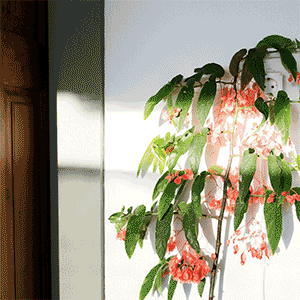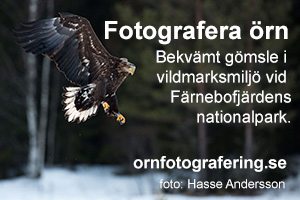barret
Aktiv medlem
Vi hade ju en lång tråd om hur Steve Bloom ändrar sina bilder i Photoshop och hur omoraliskt det är.
Jag blev smått överaskad häromdagen när jag bläddrade i senaste National Geographic. Chefsredaktören bad på en hel sida om ursäkt för att en fotograf fört tidningen bakom ljuset.
I detta fall har en fotograf lyckats att sätta hela NG's goda namn på fall genom att arrangera bilder och att sedan ljuga. Om han är digitalare eller analogare saknar helt betydelse.
Tycker det hela är rätt intressant när folk(analogister främst) kämpar med näbbar och klor för att bevara sin "ärliga" fotograferingsform.
Mitt förtroende för NG har fått sig en törn... Nu ifrågasätter jag mer av vad jag ser.
Jag blev smått överaskad häromdagen när jag bläddrade i senaste National Geographic. Chefsredaktören bad på en hel sida om ursäkt för att en fotograf fört tidningen bakom ljuset.
I detta fall har en fotograf lyckats att sätta hela NG's goda namn på fall genom att arrangera bilder och att sedan ljuga. Om han är digitalare eller analogare saknar helt betydelse.
Tycker det hela är rätt intressant när folk(analogister främst) kämpar med näbbar och klor för att bevara sin "ärliga" fotograferingsform.
Mitt förtroende för NG har fått sig en törn... Nu ifrågasätter jag mer av vad jag ser.
In the July 2004 issue of National Geographic, we published a story about elephant hunting in Tanzania by the Barabaig people.
To our profound disappointment, we have learned that we were misled by the photographer and that three of the published photographs do not accurately depict the situation described in the accompanying text.
On pages 78-9 (photograph above), the picture caption reads that hunters are carrying "tusks taken from an elephant found dead in the bush." Soon after the article was published, several readers pointed out that there are faint but unmistakable numbers on the tusk on page 78—which we failed to notice before publishing the story. We now know that the tusks belong to the Tanzania Department of Wildlife. When we asked photographer Gilles Nicolet to explain, he admitted that he himself had supplied the tusks to the hunters after borrowing them from local wildlife authorities.
This was in direct contrast to what Nicolet had repeatedly assured us when we were preparing the story. As part of our rigorous internal system of checks and balances, we routinely obtain independent verification of the circumstances in which a photograph is made. In very few instances, we are unable to do so. This story was one of those cases, and we published it knowing that we were relying heavily on Nicolet's accounts.
In light of his disturbing admission about the tusks, we immediately launched an investigation into the other photographs in the story and determined that the two on page 85—which the caption identifies as showing a successful hunter removing his spear from an elephant and then removing the tusks—were actually made several years earlier and are not of the Barabaig. (See photographs below.)
By publishing this story, we failed our readers. We are currently reviewing our internal procedures to do our best to ensure that this type of mistake does not happen again. In addition, we are re-examining Nicolet's only previous story for National Geographic ("Hunting the Mighty Python," May 1997); to date it appears that all of the pictures and accompanying captions are accurate.
We apologize to our readers.
William L. Allen
Editor in Chief
07.15.04







